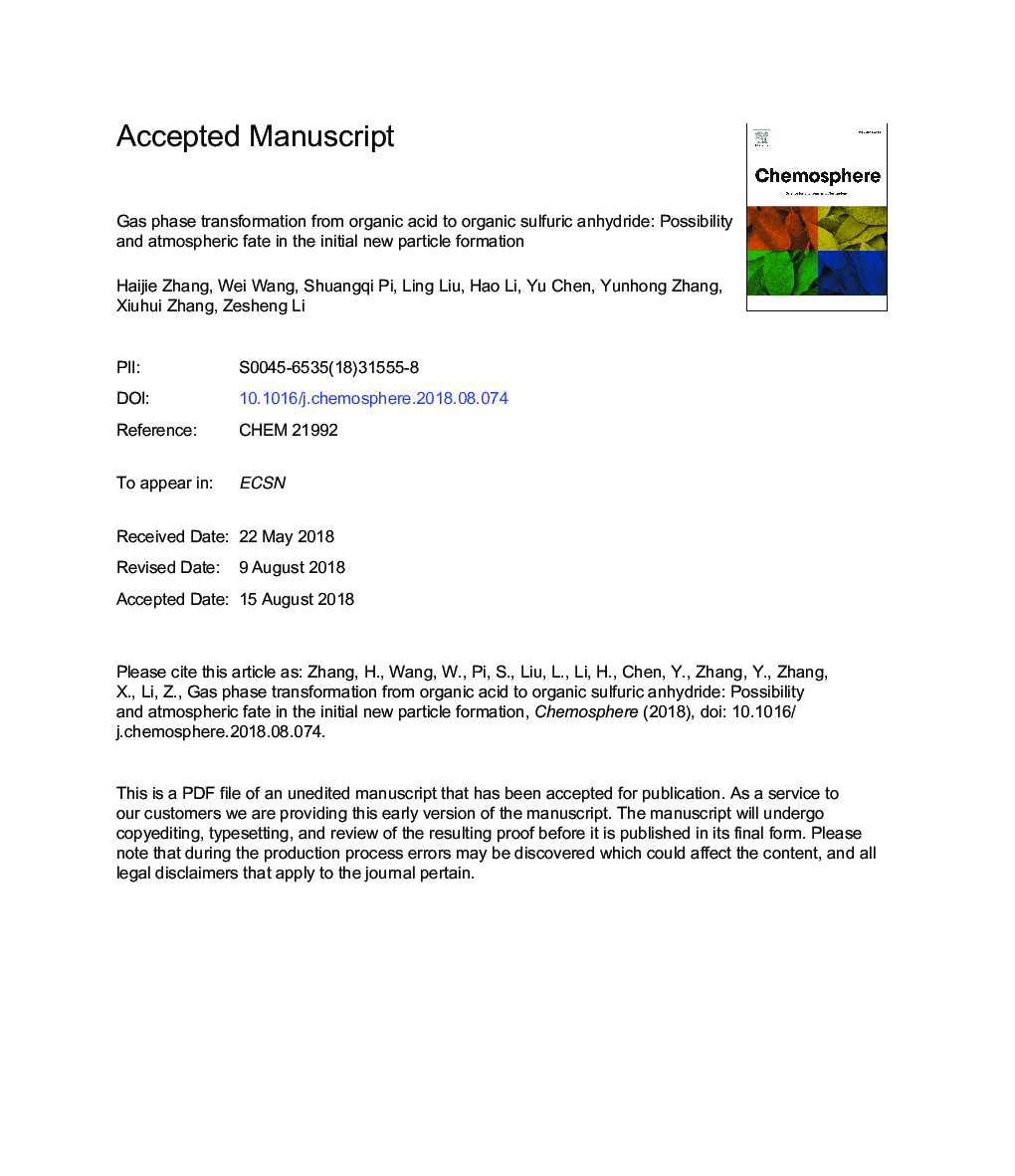| Article ID | Journal | Published Year | Pages | File Type |
|---|---|---|---|---|
| 10130156 | Chemosphere | 2018 | 36 Pages |
Abstract
New particle formation (NPF) process has been observed frequently in various environments and produces a large fraction of atmospheric aerosols. However, the chemical species participating in the nucleation as well as the corresponding nucleation mechanism in the atmosphere still remain ambiguous. Recent research by Leopold et al. shows that cycloaddition reaction of SO3 to carboxylic acids could contribute to the formation of organic sulfuric anhydride which would have lower vapor pressure compared with the corresponding carboxylic acid and hence kick-start new particle formation in the gas phase. In the present study, energy profile for the formation of 3-methyl-1,2,3-butanetricarboxylic sulfuric anhydride (MBTCSA) through the cycloaddition of SO3 to 3-methyl-1,2,3-butanetricarboxylic acid (MBTCA) has been investigated using computational methods. As a result, such a process would be effectively barrierless for one of the terminal carboxy group and has very low energy barriers for the other two carboxy groups (0.6 and 2.8â¯kcal/mol, respectively), indicating the whole process is a plausible gas phase pathway to MBTCSA formation. Furthermore, by evaluating the stability of the generated atmospheric clusters through topological and kinetic analysis, interaction between atmospheric nucleation precursor with MBTCSA is found to be more thermodynamically favourable and stronger than those with sulfuric acid and MBTCA which is identified from further-generation oxidation of a-pinene. Hence MBTCSA is speculated to be a potential participator in the initial new particle formation and the further particles growth.
Related Topics
Life Sciences
Environmental Science
Environmental Chemistry
Authors
Haijie Zhang, Wei Wang, Shuangqi Pi, Ling Liu, Hao Li, Yu Chen, Yunhong Zhang, Xiuhui Zhang, Zesheng Li,
